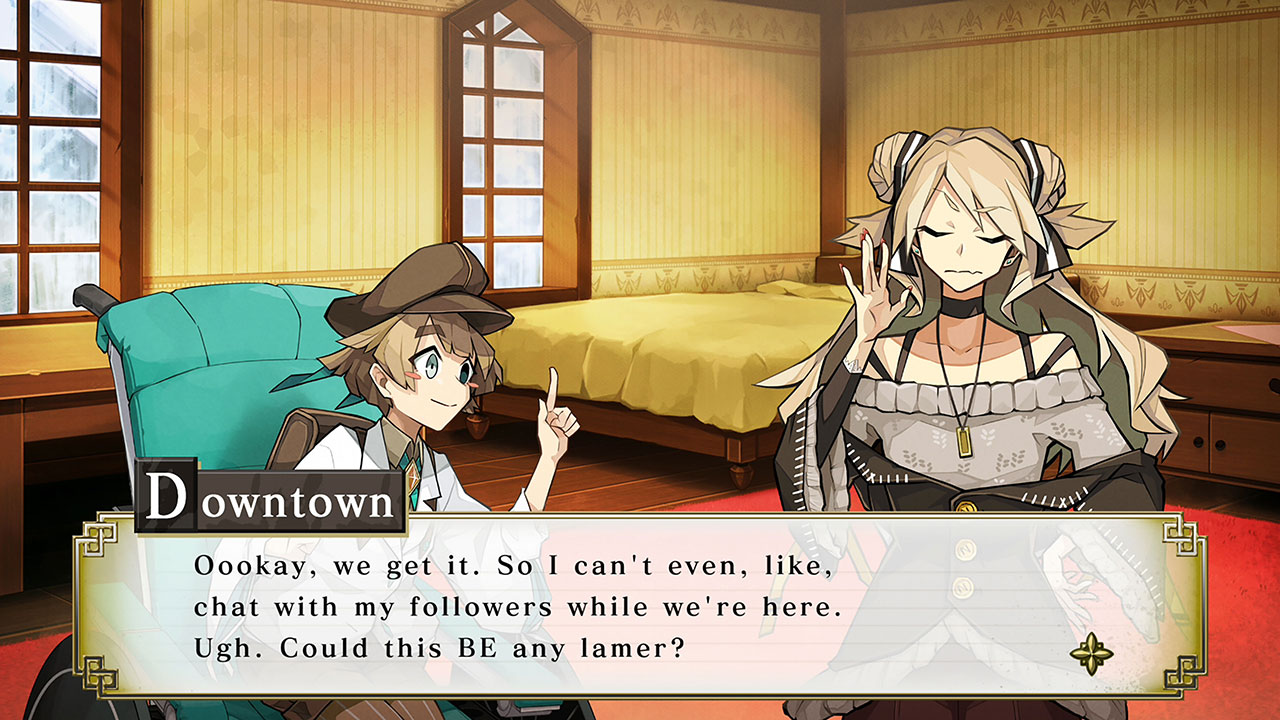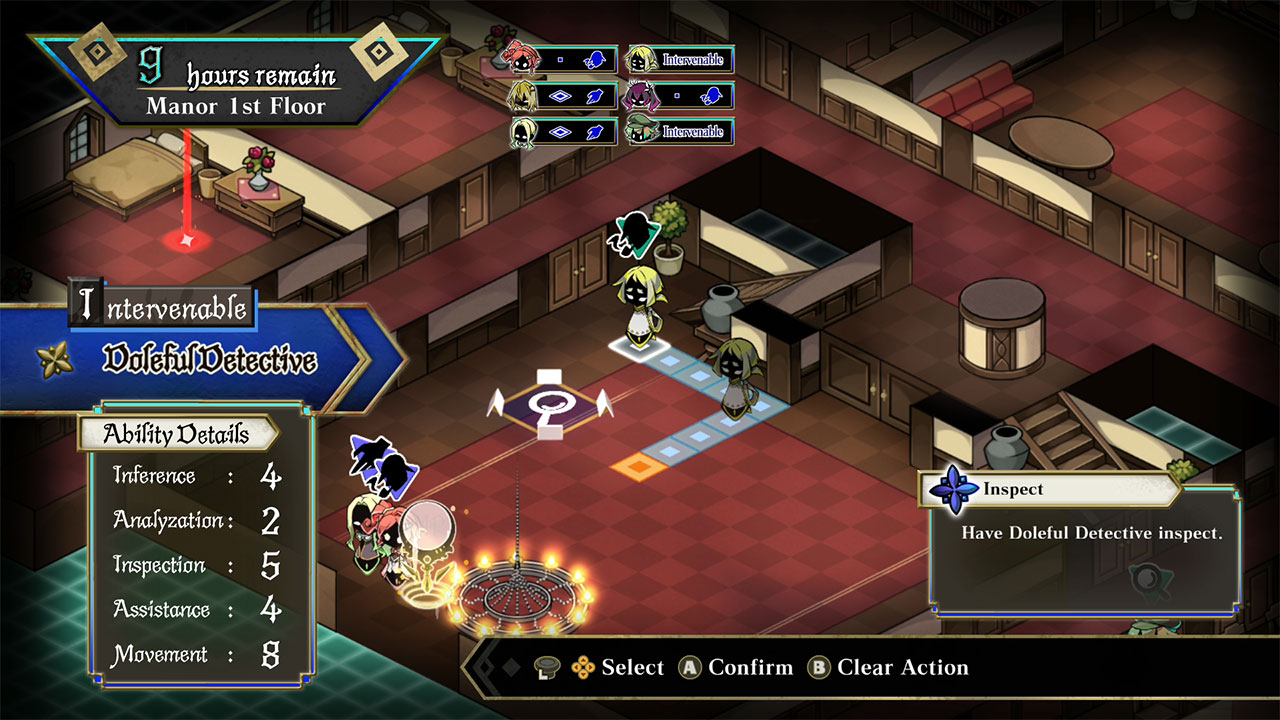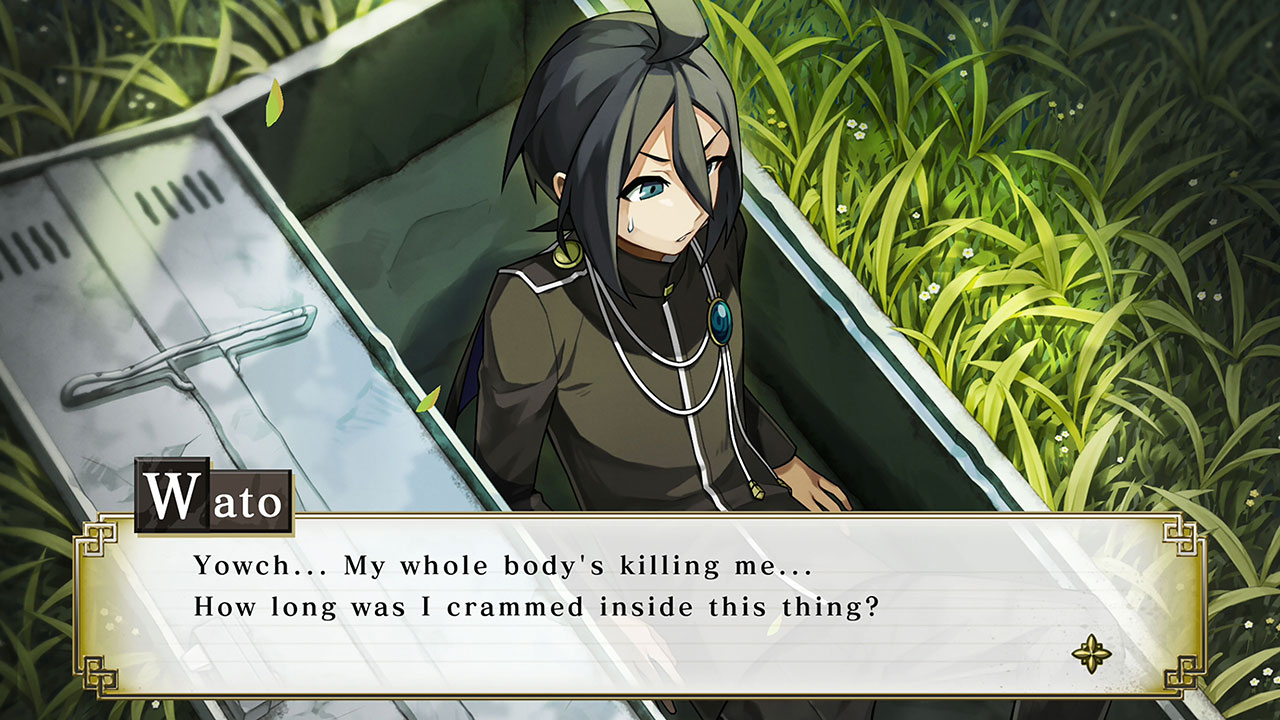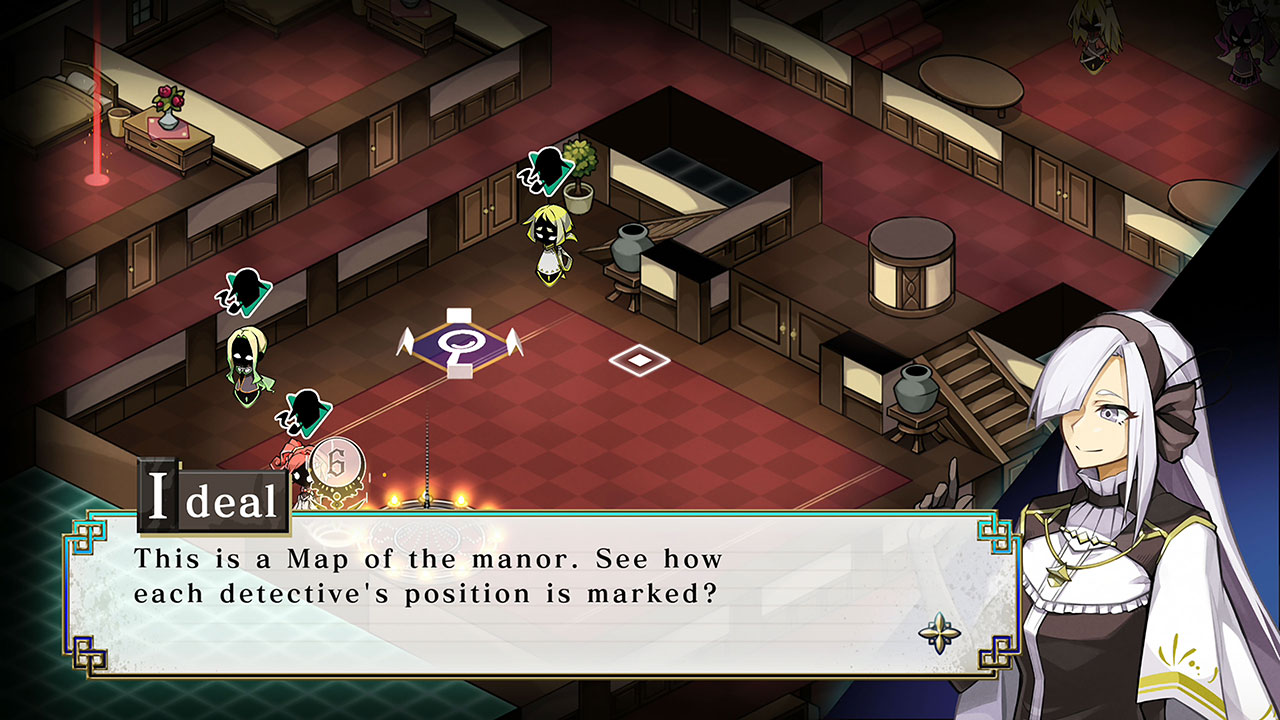Process of Elimination: an intriguing take on the detective drama and “death game” genres
Process of Elimination from Nippon Ichi Software is one of those games that, regrettably, came out amid little to no fanfare, was barely acknowledged by anyone and promptly disappeared off the face of the planet — aside from one reviewer getting upset about Gourmet Detective’s boobs. That’s a bit of a shame, because it’s actually a very solid interactive mystery story, with one or two caveats those who have only dipped their toes into the genre will want to bear in mind.
So let’s address those up-front. Don’t come into this expecting something as interactive as Danganronpa, AI: The Somnium Files or even the Ace Attorney series. Process of Elimination is a visual novel first and foremost, during which you will spend a lot of time enjoying character dialogue and not having much input on the situation. In your first 8 hours or so of play, you will experience the game’s core mechanical element precisely twice, for about 15-30 minutes at a time at most.

This isn’t a criticism, but rather something to be aware of — because while some people are quite happy for a game to be majority plot with occasional interactivity, others prefer their games to be a little more consistently hands-on. And perhaps Process of Elimination could have spiced things up with some simple adventure game-style point-and-click segments, but the creators took the decision not to. And that’s absolutely fine — just be aware of this going in. For the most part, you will not be “actively” investigating in the same way as in the other games mentioned above.
When the game does set you free to enjoy its mechanics, though, it does so in a completely distinctive way that is totally unlike any of the other previously mentioned games. Eschewing an adventure game style in favour of a strategy game, Process of Elimination tasks you with managing a team of detectives as they move around an environment in a turn-based fashion, using their abilities to gradually make inferences, discover evidence and analyse said evidence.
A strong emphasis is placed on cooperation, as without making use of various ways for the detectives to help each other out, you likely won’t solve each mystery within the time limit provided — and failure to do so generally results in dire consequences, as denoted by the time limit indicating that you have “[x] hours until annihilation”.

It works really well and strikes a good balance between requiring some strategic smarts and being accessible even to those who don’t typically play this sort of game. Plus there are plenty of optional objectives to uncover if you think you have the mental capacity to incorporate them into your overall strategy. So big win there.
Given how infrequently the “game” part of Process of Elimination comes up, though, it better have a decent story to back it up — and thankfully, it does, although it is, of course, very contrived in that distinctive Japanese “death game” style.
The background of the game’s story is that a serial killer known as the Quartering Duke has been on a rampage for some time, and the fact that he has remained uncaught has led to a crime epidemic as copycat killers and those simply empowered by his success have sought to cause chaos. In the wake of this situation, an organisation known as the Detective Alliance was established, bringing together remarkable people from a wide variety of backgrounds who don’t necessarily have formal training, but who have shown themselves to have considerable aptitude for solving mysteries.

We join the story alongside protagonist Wato, who has been working as an assistant for a private detective alongside his studies at school. He clearly has some talent, but also makes a lot of mistakes on the job. In the opening moments of the game, he tracks down what he thinks is a suspect, only to discover it’s actually a member of the Detective Alliance, then finds himself drugged and abducted, waking up on a rather inhospitable island with the rather unwelcoming name of “Morgue”.
Wato discovers that this island is actually the headquarters of the Detective Alliance, and soon meets up with other members of the Alliance who have been gathered together in a last-ditch attempt to take down the Quartering Duke once and for all. Unfortunately, things are not that simple at all; a research facility on the island has been hit with a gas attack, killing more than 20 people inside, and the mansion (ominously named “Gormenghast”, after the 1950s fantasy novel) that the Detective Alliance calls home appears to be full of traps and mysteries of its own.
What then follows is a series of distinct “cases” as the members of the Alliance attempt to uncover the truth of the situation in which they find themselves — as well as weeding out any possible traitors in the group. Each case unfolds in three distinct phases: an initial setup phase, which is delivered primarily through narrative; an investigation phase, which unfolds as the aforementioned strategy game; and a wrapping-up section, during which you (as Wato) must correctly answer a series of questions about the case that has just unfolded.

What works so well about Process of Elimination is how strong all the characters are. As part of Detective Alliance convention, none of the detectives reveal their real names except under very specific circumstances, and as such they are typically referred to by their codenames, chosen by either themselves or, in the case of Wato, by the group as a whole.
The effect this has on your perception of them is interesting. On the one hand, it makes their core characteristics, talents and even personality very clear — there’s an almost “Cluedo”-like feel to how each character is presented as such a clear, self-contained “image” that is encapsulated by their codename — but on the other, it makes the frequent occasions that the game subverts expectations all the more effective. As you learn more about the various characters, you start to realise that they’re a lot more than what appears to be their most defining traits, and this is where the game really shines.
At the same time, the characters’ specialisms and abilities are relevant during the strategic portion of the game. More physically inclined characters such as Rowdy and Armor Detective, for example, are best used for supporting others or tracking down evidence, while more intelligent characters such as Techie, Bookworm and Workaholic Detective are best equipped to make inferences about each scenario’s core mysteries or analyse pieces of evidence that have been acquired.
To say too much about the overall story of Process of Elimination is to give too much away, because this is a mystery game, after all — and one in which we’re quickly encouraged to mistrust those around us, even as we’re forced to work alongside them.
There are plenty of interesting and unexpected twists and turns along the way — and plenty of references and homages to established detective fiction (including Sherlock Holmes, the Pinkerton Detective Agency and Cordelia Gray) from a variety of authors. This all makes for a thoroughly compelling game that any fans of mystery stories will have a great time with — so as long as you’re on board with the visual novel-centric nature of how the narrative is delivered, this is definitely a game worth adding to your collection.
Join The Discussion
Rice Digital Discord
Rice Digital Twitter
Rice Digital Facebook
Or write us a letter for the Rice Digital Friday Letters Page by clicking here!
Disclosure: Some links in this article may be affiliate links, which means we may earn a small commission if you make a purchase after clicking on them. This is at no additional cost to you and helps support Rice Digital!
- Letter from the Editor: passing the torch - June 30, 2023
- Super Woden GP 2 is looking promising - June 30, 2023
- Inti Creates is making a 32 bit-style Love Live action platformer - June 26, 2023






